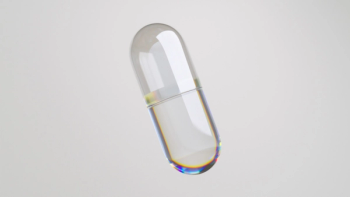
- Nutritional Outlook Vol. 18 No. 8
- Volume 18
- Issue 8
Softgel Benefits for Dietary Supplements
Myriad benefits attract consumers to the softgel format, and formulators are meeting demand with innovations that allow for increased offerings.
In a supplement market where consumers have seemingly endless choice-tablets, liquids, capsules, functional foods-they return again and again to softgels.
As far back as 2009, research from Catalent Inc. (Somerset, NJ) found that consumers preferred softgels to other delivery formats due to the fact that they’re easily digested, easy to swallow, and convenient to take. Additionally, consumers surveyed also prioritized products that were safe, efficacious, and fast-acting-all benefits boasted by the softgel. Further, though softgels are often pricier than other options, it needn’t be a hurdle; researchers found that more than a quarter of consumers who prefer softgels were willing to pay a price premium for them.
“Both consumer and marketing companies are requesting softgels more than ever before,” says Steve Holtby, president and CEO of Soft Gel Technologies Inc. (Los Angeles). “As the average individual’s education level regarding supplements continues to rise, the unique and superior qualities of softgels in specific solutions become more appealing.”
Boasting Benefits
Indeed, softgels offer many benefits to consumers, the first of which is that they are very easy to swallow as compared to some other delivery formats. And unlike chewables or liquids, which also appeal to the easy-to-swallow trend, softgels have no taste; unlike some tablets, they have no odor.
But beyond these benefits lies a key allure cited in the Catalent study-enhanced efficacy and bioavailability, which Holtby says is one of the most widely recognized benefits of softgel capsules. “Softgel capsules improve bioavailability by delivering the nutrient in solution or other absorption-enhancing media,” he explains. “By providing enhanced absorption and bioavailability, consumers can expect fast disintegration and immediate nutrient delivery to produce a quicker onset of action.”
According to Holtby, this benefit is a result of the very nature of the sealed softgel capsule: when sealed, nutrients are protected from oxidation and degradation. Opaque options can also protect against light and UV radiation, which further ensures ingredient stability and minimizes free radical formation, “especially in the case of oils,” he says.
On the manufacturing side, softgels offer a host of benefits, as well, says Holtby, beginning with the wide variety of shell colors, shapes, and sizes available to offer product differentiation in the market. And “although aesthetically pleasing supplements appeal to the consumer eye,” he adds, “the inner fill of the capsule is even more important. Softgel capsules can accommodate a wide variety of compounds filled as a semi-solid, liquid, gel, or paste. Micronized materials can be used in inner fills of softgel capsules, whereas tablets and hard-shell capsules require larger particle sizes.”
And when it comes to safety, softgels are tamperproof. “A tampered or punctured softgel will leak or become discolored, thereby showing evidence of a potential problem,” Holtby says. “This provides consumers with a sense of security while taking their supplements.”
Trends and Challenges
Currently, one of the biggest trends in softgels is vegetarian. In fact, the Catalent study revealed that more than three-quarters of respondents preferred plant-based options. But the reality for many manufacturers and formulators is that this trend also boasts its share of hurdles.
First, vegetarian offerings are more expensive than their conventional counterparts, and Holtby argues that a vegetable-derived shell won’t be as strong as one made of animal gelatin. “In addition, the physical characteristics of many vegetarian gelatin blends make it difficult to encapsulate all but the simplest oils,” he adds. “To add insult to injury, the unique advantage of standard softgels is rendered nil in vegetarian format: softgel fill material is usually protected from oxygen exposure after encapsulation, but vegetarian gelatin is porous.” This means that the oils inside vegetarian shells can become rancid more quickly.
Vegetarian issues aside, additional hurdles challenge the softgel market. Some ingredients-particularly those in powdered form-don’t blend well into an oil base, which is a necessary step when formulating a softgel. In response, Soft Gel Technologies is investing resources into addressing this issue among various ingredients. For example, the company developed a crystal-free line of CoQ10 products, which transforms the powdered ingredient into a solution via the addition of a natural solvent. The result is a true softgel-ready ingredient, rather than a suspension of powder in oil.
Multi-ingredient formulations present yet another challenge. “For example, combining probiotics with omega-3 is a challenge, since probiotics do not like high temperature or humidity, both conditions usually required for softgels,” says Charlotte Beyerholm, marketing manager at Chr. Hansen Human Health & Nutrition (Denmark). Chr. Hansen has overcome this challenge with the development of Life Gel technology, which allows for the formulation of a softgel that can include these two ingredients, while also preserving probiotic life. “Life Gel is the first softgel formulation that can document live probiotics with two years’ shelf life and with efficacious dose,” she adds.
And in a supplement landscape where consumer needs are consistently extending beyond basic nutrition to include blends, condition-specific products, and more, such innovations are necessary if the softgel market is to expand.
Also read:
Articles in this issue
about 10 years ago
Switching from Synthetic to Natural Colors? Here Are Your Challenges.about 10 years ago
Contract Researchers Offer Customized Solutions for Natural Productsabout 10 years ago
Dietary Supplement Capsules Challenges and Trendsabout 10 years ago
Dietary Supplements and FDA Compliance: An Update on GMPs and 483sabout 10 years ago
Editorial: Turning Up the Volume on Dietary Supplement Quality ControlNewsletter
From ingredient science to consumer trends, get the intel you need to stay competitive in the nutrition space—subscribe now to Nutritional Outlook.





